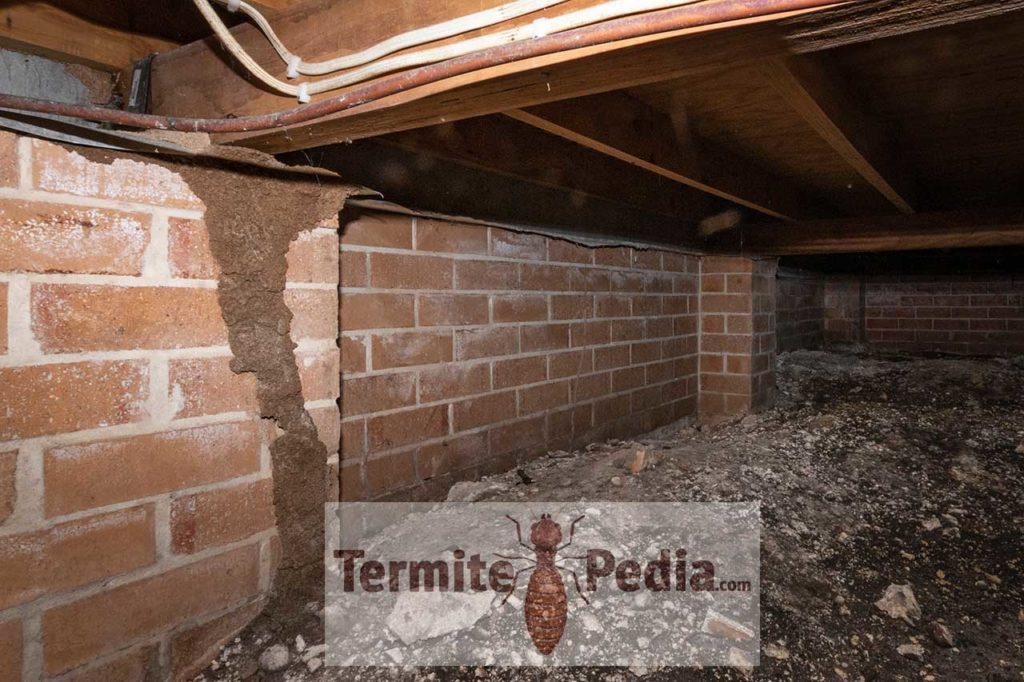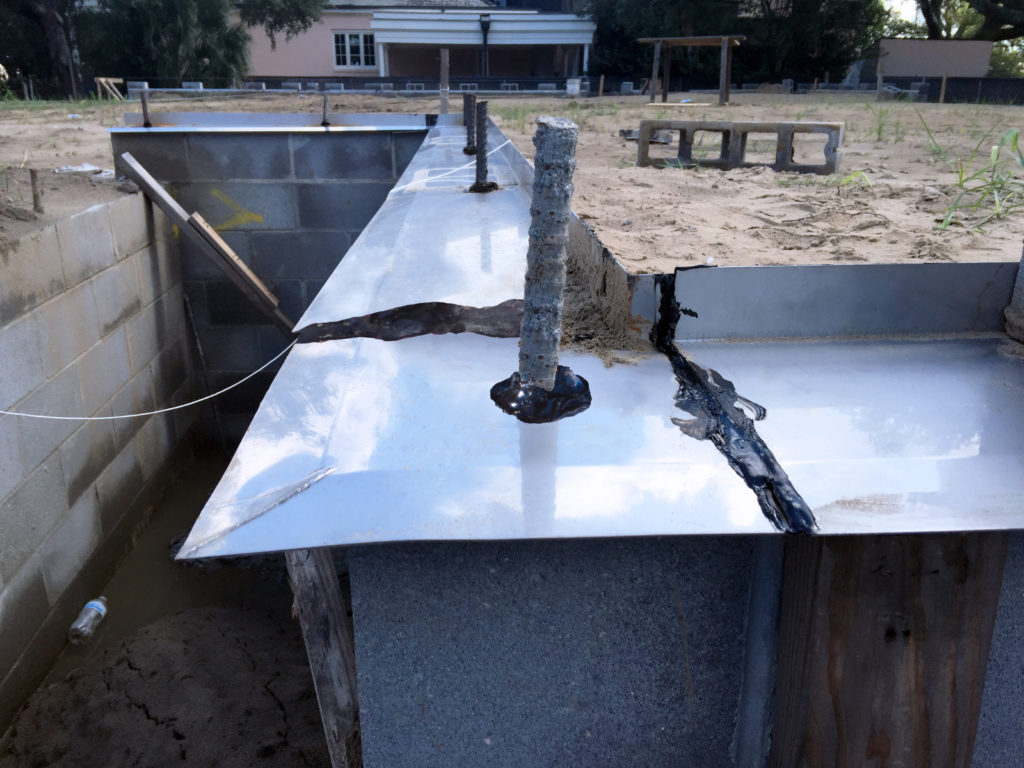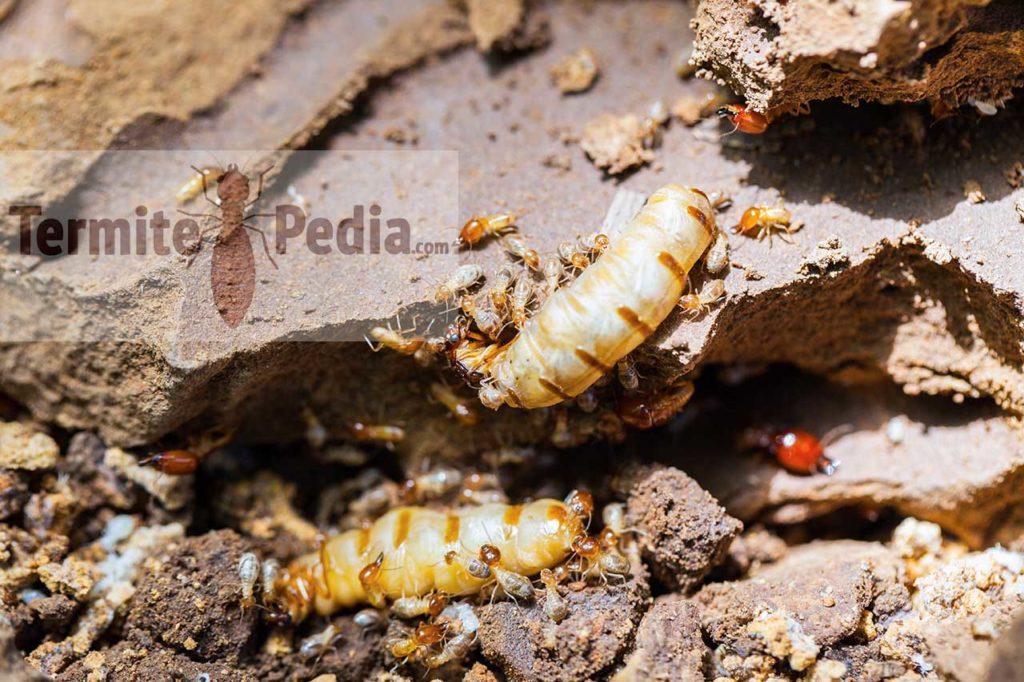
The Best Termite Treatment Measure Of 2024
The best termite treatment is prevention, which is, taking preventive measures that will either repel the crawly bugs or an impermeable barrier which will force them to either starve to death or migrate to another location.
What Are Termite Shields And How Do They Work?
Termites are eusocial insects, they are important in the ecosystem although they can be a big problem in many areas of the world, especially warm, moist climates.
However, there are termite species in almost every environment in the world. Some termites even live in the desert! That means that just about anyone could be at risk of developing an infestation of these inconvenient pests.
Fortunately, there are ways from having to deal with this, as long as you know what you’re doing. One lesser-known, but effective method is to use termite shields. Let’s take a look at these and see how they work.
Prevention is one of the best termite treatment processes. It starts before you ever develop an infestation. After all, if you don’t currently have termites, taking steps to avoid getting them could be really helpful. To do this, you need to make sure they can’t get into your home or other building. Termite shields are an excellent way to keep these pests out.

These shields are made from metal, a substance that termites can’t tunnel through. Its surface is also inhospitable to their mud shelter tubes, unlike concrete and wood.
You’re most likely to benefit from the use of metal shields if you have walls made from masonry or concrete. However, termite shields can also be used to prevent rising damp from affecting wooden areas. If the wood is completely dry and not in contact with the ground, then it’s not a good place for termites to live. This then forces the termites to attempt mud tunnel building on the outside of the shields, this attempt is more difficult, proceeds more slowly, and is a lot more visible to humans than tunnels in the ground or through the wood.
This type of tunnel warns you that termites are around, and simply knocking it down will keep them from moving into your home. Generally, shields are made from varying sheets metal, for example, galvanized steel, aluminum, copper, or terne that’s unrolled and attached to the walls of your foundation. It’s bent at an angle so it touches the ground.
Termite shields have to be made by someone who knows what they’re doing, ideally, by a professional, as tight construction and sealed joints are a must. If there’s a gap in your shields, termites have the ability to enter through these cracks and make it inside your home.
If built correctly, these termite shields are an excellent choice in the battle against termites. Use metal plates on decks and other wooden structures to protect the joints, too as they’re the most vulnerable to attack.
Using termite shields to prevent an infestation in the first place is a smart way to deal with things, especially if you live in an area where there are a lot of termite colonies. Keep termites out of your home, and you’ll never have to worry about getting rid of them later. Installation of these shields is much cheaper and easier than getting an infestation treated, and it’s a lot less invasive, too. If you’re worried about termites, take some time to check out metal shields to keep them out.

Termite Bait Stations
There aren’t many structural pests that can measure up to termites when it comes to damage. Most of us know that termites are a problem, but we don’t know a lot about them. Many homeowners are unaware of some of the preventive measures that can be used to control these troublesome pests, and how well they do or don’t work.
A termite bait station is one that you may hear a lot about. Let’s take a look at how termite bait works and find out whether or not it’s a worthwhile treatment against these unpleasant insects.
How termite bait stations work
Subterranean termites live below the ground in enormous colonies connected by tunnels. They can travel some distance to find food. In nature, they rely on logs, stumps, decaying tree roots, and other sources of cellulose.
Unfortunately, many buildings are also made from wood, including sheds, outbuildings, and houses. Once a termite colony discovers a home, they’ll probably move right in, and it can take years to find them. They’re tenacious, good at hiding, and difficult to get rid of.
Conventional termite treatments have long been involved in creating a barrier with liquid pesticides. This blocked entry from termites but was very difficult to put into place. It also involved the injection of hundreds of gallons of pesticide along the foundations, inside walls, and under slabs. This method requires drilling and is highly disruptive, and may have long-term environmental effects we don’t entirely understand. For all these reasons, conventional termite barrier treatment has some real problems.
Termite bait is an alternative approach that uses bait stations. This bait is consumed by foraging insects returning to the colony and sharing their food with nestmates.
The bait contains a substance that stops termites from reproducing effectively and causes a long-term decline in their numbers. It may even eradicate the colony.
Termite baitings, unfortunately, take a long time and require a lot of inspection and monitoring, as well as future rebaiting.
The baits are made up of cardboard, paper, wood, and other cellulose foods that termites like combined with a slow-acting poison.
There are several different methods used to deliver termite bait. Some bait stations are installed inside a building, near active termite tubes, while others are inserted below ground in the home’s yard, garden and even in the greenhouse.
Baiting may be used alone or in conjunction with liquid applications or organic methods of pest control.
Most of the time, bait stations start out with untreated wood in them, and once termites are caught in these stations, it is replaced with treated bait material. Stations are generally installed twenty to thirty feet apart around the whole outside perimeter of the building.
Used correctly, termite bait can be an extremely effective, less invasive method of getting rid of or reducing the population of a termite colony. However, it’s still an expensive process, and it can take a long time. This means that many people are impatient and unsure of the effectiveness of this solution. If you’re interested in using termite bait to combat your problems, be sure to research it carefully, and remember to be patient.
Should You Use Termite Traps?
If you’re buying a home, you should think about termites. They’re a frequently overlooked, but very real problem when it comes to making a house purchase. And just getting an inspection might not protect you. Here are a few steps you should go through before buying to make sure you don’t have termites in your brand new living space, including how and when to use termite traps.
Termites aren’t just limited to the south. They may be more numerous there, but there are plenty of these creatures in other locations.
Subterranean termites are native to the entire United States. They’re hard to find, live far below ground, and infest another two million structures every year, costing more than three billion dollars a year. Termite damage isn’t usually covered by insurance, either, which is why a good inspection and use of termite traps is so important.
On top of that, termites that used to just be regional threats are now spreading elsewhere, due primarily to more traffic between states.
There are a lot of different kinds of termites that can survive for a little while without soil to live in – usually long enough to infest somewhere new. You might think you’re protected by a building inspection or even a standard termite inspection, but you might not be.
Many building inspector contracts are written so that the inspector’s liability is limited if something is found. The contract isn’t a guarantee – it’s just something to help you find out about the home, and it might not be conclusive.
Unless you pay an additional fee, you won’t be able to pin the inspector down on the termite issue. If you find an infestation, there’s a good chance it’ll be your problem, unless you can prove the inspector knew there were termites and lied about it.
So, what can you do? You can look into your state laws and ask your inspector to use specific, formal reports that are more detailed than the usual one. This is your right under many state laws, and it can help you learn whether or not there are termites.
If you’re having a specific termite infestation check done, make sure that it’s more than just a look around the house. Termites are good at hiding, and only the use of quality termite traps can help you find them in some cases. They’re attracted to the wood in the trap and may come out for that, even though a quick visual inspection can’t spot them.
You should also look for signs of trouble on your own. Make sure you know what the signs of termite infestation are, and look things over in detail. Ask the seller upfront whether or not any treatments have been done or evidence of termites in the past.
If they lie to you, you can file a suit later. Specific questions are much better than general ones, which the seller can claim to have misinterpreted. Don’t let the desire for the home blind you from using termite traps, getting a good inspection, and finding out what’s been done in the past.
So what happens when a prevention method wasn’t put in place, and now you have a termite infestation?
Here are some methods of how to get rid of termites when a prevention method wasn’t put in place.
Organic Natural Method – Best Termite Treatment Guide
Lots of people are aware that the chemicals used in pest control are damaging to the environment and a possible health hazard. That’s why more and more people are looking for more organic and natural termite treatments.
They want these treatments to be effective against the pests in their homes, but they also want them to do as little damage to the world around us as possible. If you have pets or small children, you’ll probably be especially concerned about the health hazards of conventional termite treatments.
Chemicals are without a doubt the most effective method for getting rid of termites, but they have many unfortunate side effects.
Natural termite treatments, used under the right conditions, can minimize the damage that’s done and help you keep termites out of your home. There are several options, but most natural termite control options combine prevention with extermination and avoid the use of conventional pesticides.
Sand barriers and termite shields are extremely common. These are your first line of defense against termites, as they keep them from being able to enter your home in the first place. They also make termite attempts to get past them extremely obvious, since termites must build mud tubes to travel over these barriers.
Of course, while well-installed barriers are incredibly useful at preventing an infestation, they don’t do anything about existing termites in the building.
When termite infestations do happen, the least toxic method of treatment should be used.
Orange oil, boric acid wood treatments, and other methods have all been used to get rid of termites. Another natural termite treatment that is sometimes used against drywood species is boiling water, injected directly into the nest. This treatment method has no long term side effects and takes care of colonies that aren’t widespread yet.
However, most natural termite treatments focus primarily on prevention. Just using a few strategies and changing a few things around your home can make a big difference.
Keeping termites from having food sources and hiding places is probably one of the best treatments. For instance, getting rid of sources of moisture, which termites need to survive, can do a lot to keep them out of your home. That’s why fixing leaks and using moisture barriers under your home can help prevent infestations.
If you live in an area that’s prone to termite problems, you should look into natural termite treatments. Prevention is the best medicine, and they can help you avoid dealing with a nasty termite infestation. Find out what you can do to keep termites out, without using chemical pesticides. You’ll be happier and your home will be safer.
Termite Spray – Should You Use It?
If you recently came across evidence that your home has termites, or you’re just interested in preventing a problem before you have it, you’re probably pretty concerned. One option that many homeowners choose is termite spray.
However, there are many sprays on the market, with varying levels of effectiveness and methods of application. It can be hard to know whether to spray, what to spray, and when to do it. Let’s take a look at your options, and see what you should do if you suspect you have termites.
Termite control products very readily available, and there are a lot more of them on the market. After all, the more homes we have, the greater our need for the best termite control methods are going to be.
Before determining what and how to spray, you must determine where your home is infested and learn what kind of termites you have. Subterranean termites need different treatment than drywood species and are particularly hard to eradicate.
Once you know where the termites are, you can start looking at different kinds of termite spray. One option is liquid treatments sprayed in the surface area where termites are traveling. They need to be applied anywhere termites might enter your home. They create a barrier to keep termites out of the house, and are best used as a preventative method. If you find termites in the yard, but not in the house, this kind of treatment might be worthwhile.
Best Drywood termite treatment
Direct treatments for drywood termites can include borates. This substance lasts a long time, it is toxic to most insects and can be applied directly to wood. It’ll keep termites from eating any piece you treat, and will deter them from colonizing. However, every piece of wood has to be treated, which can be difficult. After all, it’s hard to reach your home’s structural supports to coat them with any kind of chemical.
Dry foam termite sprays are used to fill cracks where termites may be living, and keep them from coming into your space. This substance doesn’t add moisture to the structure, which is a bonus. After all, termites love damp spaces and need that moisture to live. If you eliminate it, your chances of avoiding an infestation could be much higher.
Seal all cracks around your home and keep wood off of the ground. Subterranean termites can enter your home by building tunnels inside wooden pieces that are in contact with the earth.
No matter what kind of termites you have, and whether you’re trying to deal with an existing infestation or prevent a new one, termite spray could help. However, you should talk to an expert before using a product of this kind. He or she can give you good advice on what to use and what not to use, as well as how to apply it. Check out all your options before using any kind of chemicals to combat termites.
What are your thoughts on our “In-depth Guide-Best Termite Treatment And Prevention Methods”?
Please let us know via the comment section!

